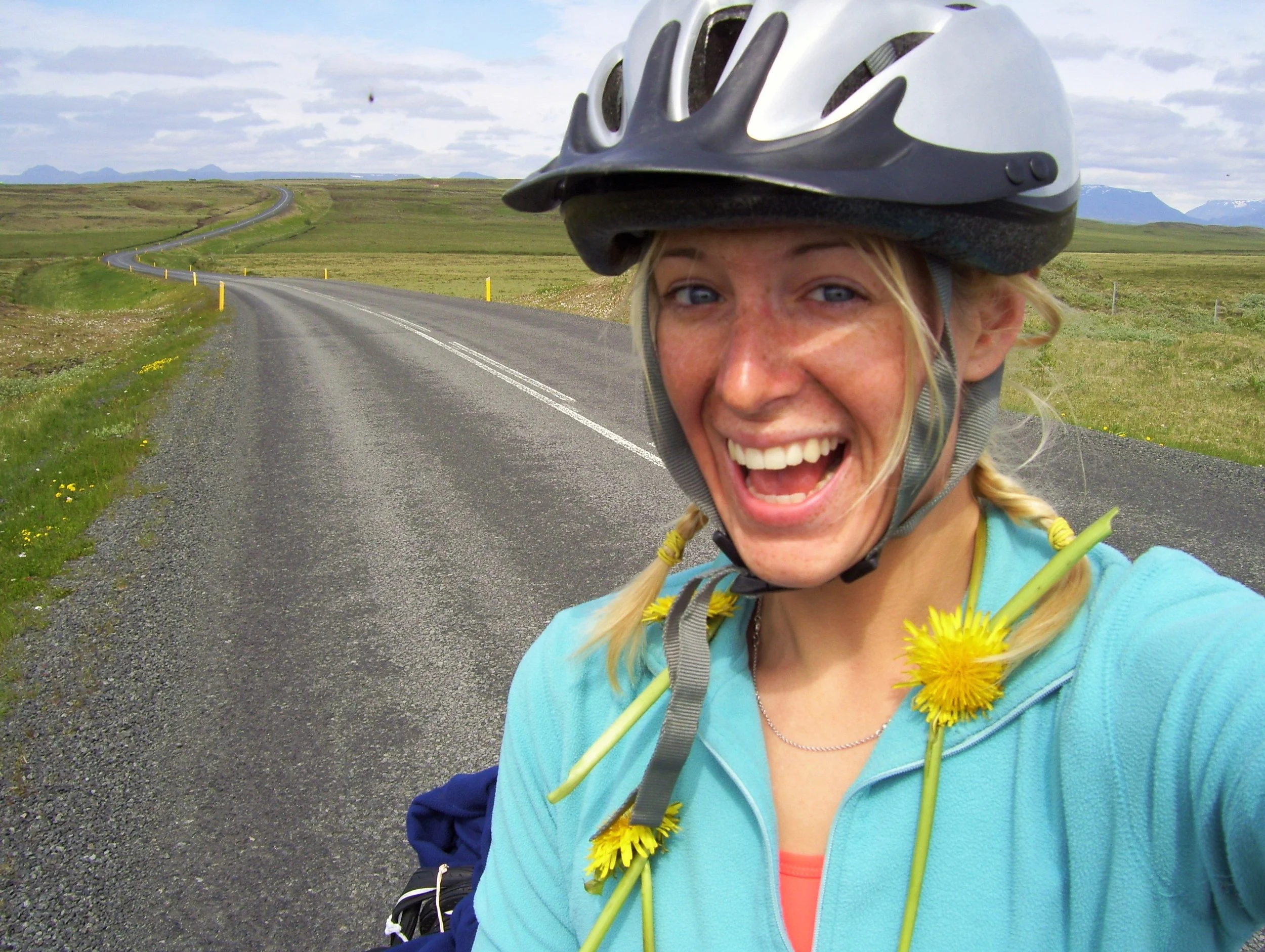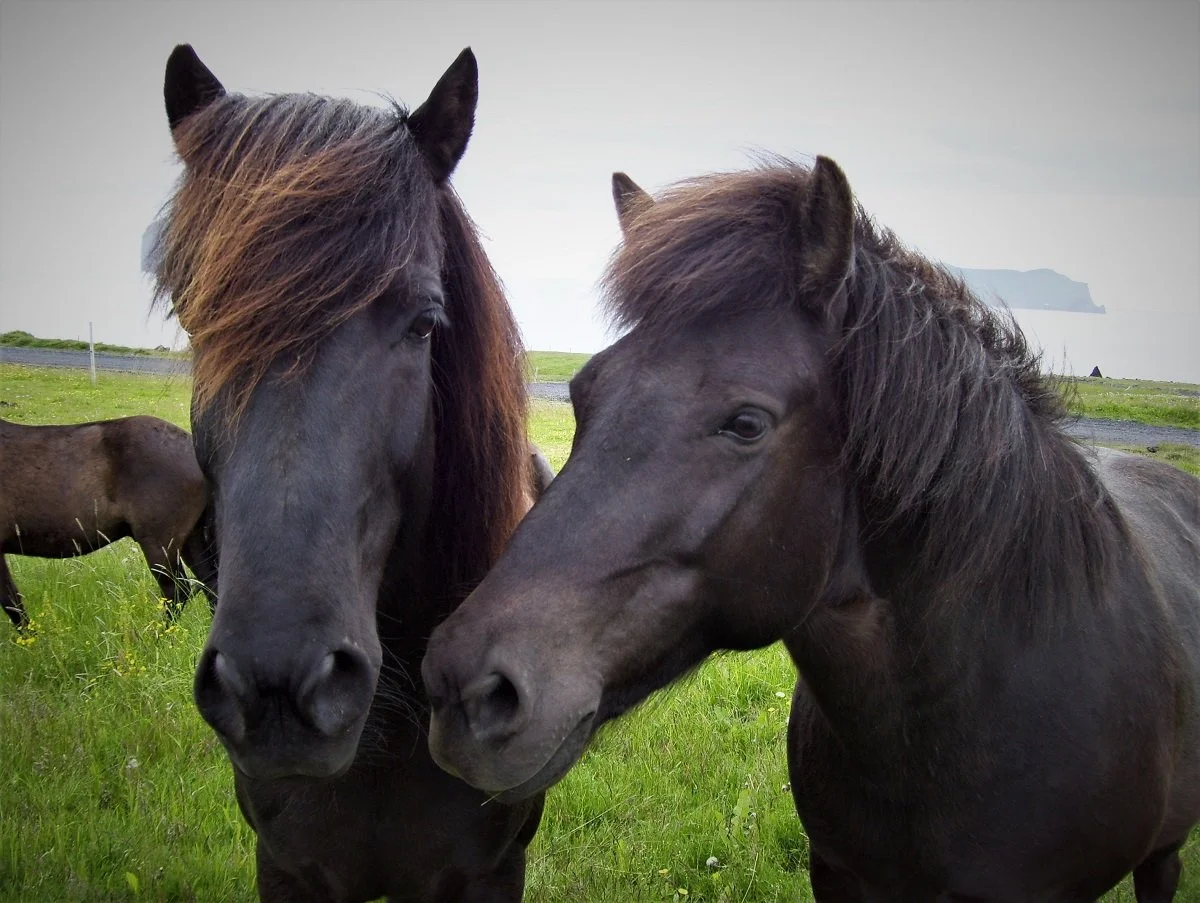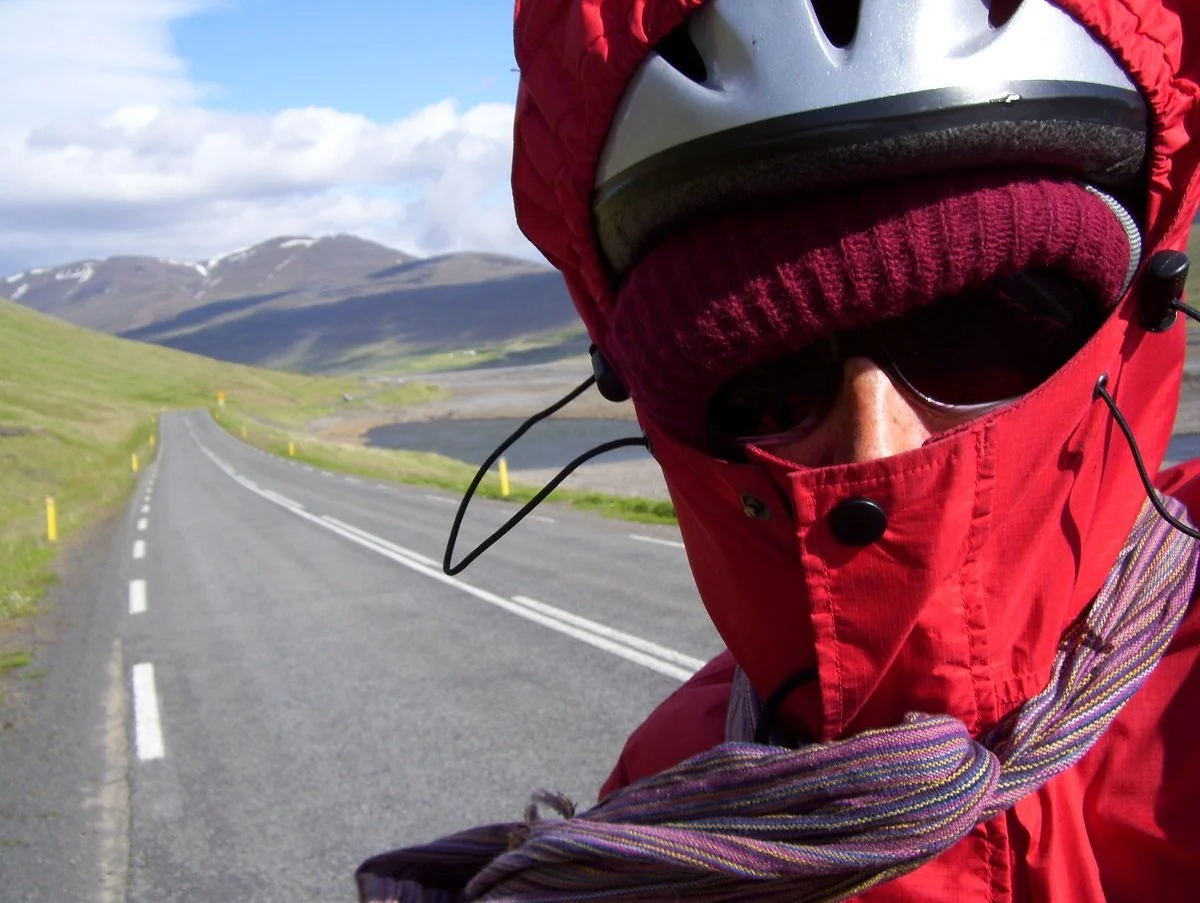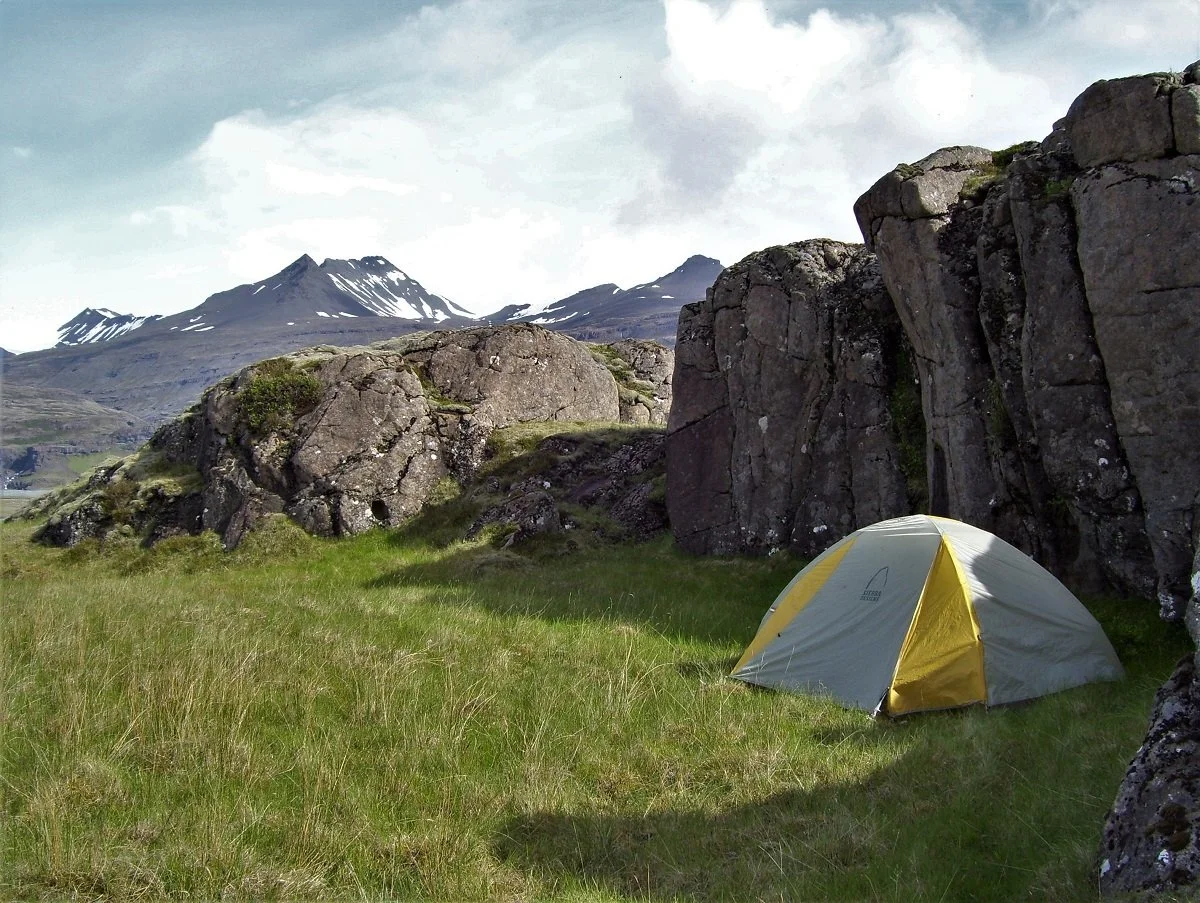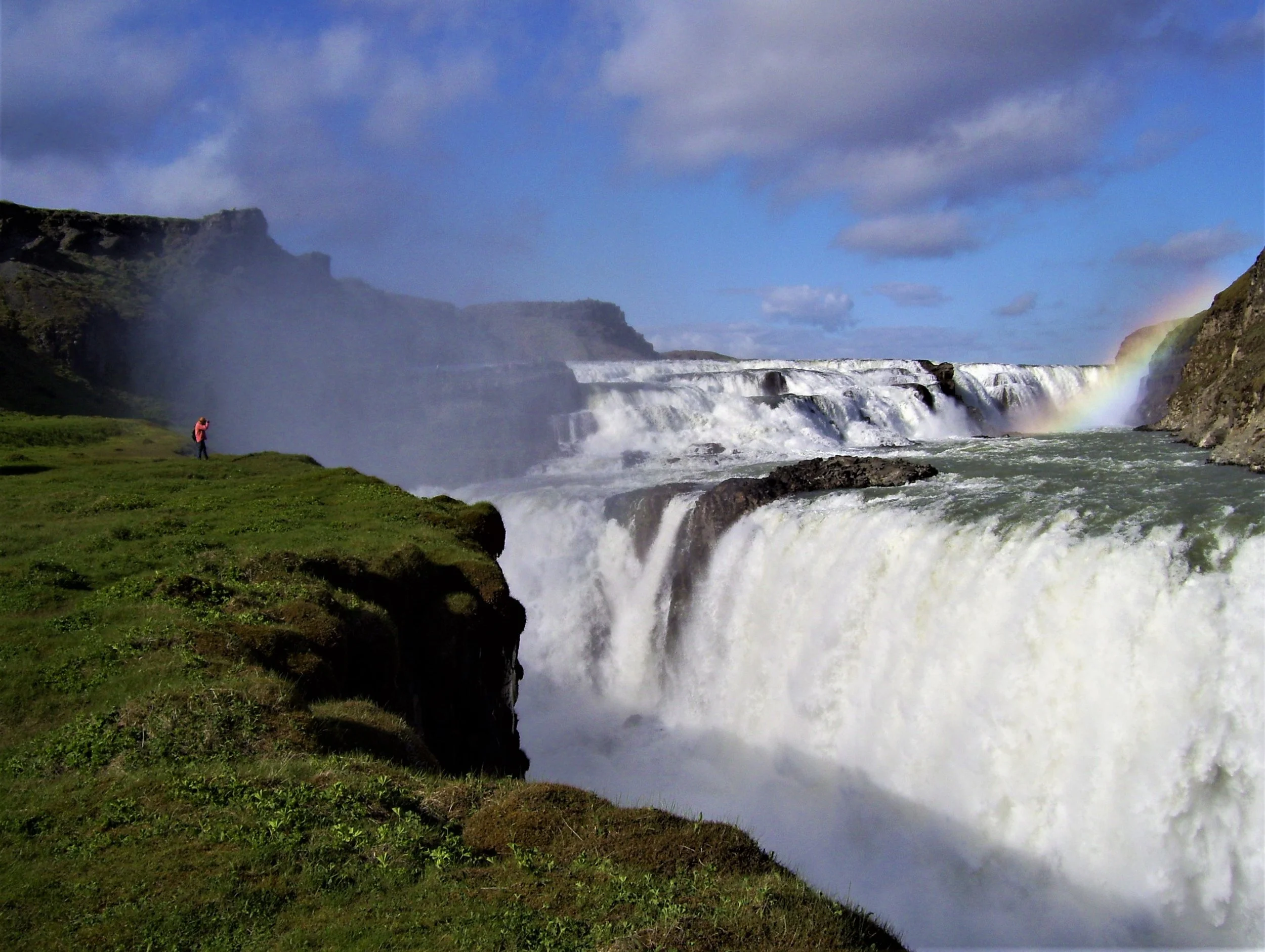Solo Cycling Iceland: My First Bike Tour
I biked out of the airport, feeling giddy. The air was cool, and the road stretched forward in a long, silent curve. The Icelandic sun hung on the edge of the horizon. I had the road to myself, but where would it lead me? I hadn't a clue.
In the span of a single week, I’d left my job, stowed all my belongings, and reinvented myself as an adventure cyclist. I had no cycling experience. I knew almost nothing about Iceland. But here I was, pedaling. I was going to do this thing, and it was real and scary and funny all together. I was, for once, fully present.
You would think this energy would have churned me along for hours. Instead, I pulled over almost immediately to take a nap. I wheeled my bike to a patch of scrub brush, lay down on the ground, and promptly fell asleep. Dawn and dusk in the arctic are long, languid events, and beneath my giddiness I was exhausted. I didn't know when the sun would fully rise, but I figured it would wake me when it did.
A few hours later, I opened my eyes to the soft gray of misty sunshine. I turned my face to the right and saw that I'd napped next to a bird's nest full of eggs. They were speckled and delicate. I lay there and watched them, then turned back to my bike. I ate some snacks from my pack, loaded up, and headed out for the day. What a strange new life!
The road that had been so quiet at dawn was packed with traffic during the day. Cars and trucks whizzed within inches of my shoulder. It felt dangerous. But now my adrenaline was pumping, and I plowed forward.
My plan was to follow Route One in a single loop around the island. I had a paper map and a guidebook for navigation. My return flight left in a month. I had no idea if I would make it. Scary as that was, it also gave me a weird sense of confidence. I would simply have to figure it out.
After a few hours, the traffic began to subside, and around this time I realized how horribly painful cycling was. The bike seat dug into my crotch in a terrible way. But it was okay — at least for a while — because as city traffic slowed, Iceland unfolded.
Small hills rose up in a rolling, vivid green, and the sky sparkled a bright, happy blue. I stopped frequently to say hello to horses with wild manes. And the sheep! They were everywhere, and better than anything I could have imagined. Each one ambled under a massive, mythical rug of shaggy hair. I wanted to hug them all.
In the afternoon I stopped at a grocery store and stood outside, reading the “food” section in my guidebook. It described traditional Icelandic food as “body parts from a slasher movie,” and highlighted delicacies like stuffed sheep stomach, smoked puffin, and fermented shark. I was on a tight budget. Would I be able to afford enough fermented shark? I didn’t have a camp stove. Would sheep stomach come pre-cooked? There was so much to think about and so much to learn.
I went inside and paced the aisles, peering at all the cans and boxes. I found crackers and sandwich supplies, but no shocking animal parts. I was vaguely disappointed until I came across a shelf with plastic bags full of dried fish. It was Harðfiskur–dried haddock, ripped into strips. My guidebook described it as “a popular snack, eaten with butter.” I loved snacks, and I loved butter! I bought my first of many bags of Harðfiskur.
When I got back on the bike my body felt good, with the unfortunate exception of my nether regions, which felt like they were on fire. I tried to ignore the pain and hoped I would feel better with time.
That evening I set up my tent in a field and pulled out my dried fish and butter. The fish was brittle and flaky, but when I spread enough butter on it, it sort of held its form. It did not taste very good, but I loved it anyway.
I poked through my guidebook and studied the route ahead. The next day I would arrive at the turnoff for Gullfoss, one of Iceland's most popular waterfalls. But getting to the waterfall meant a 70-kilometer detour. I sat and watched the dusk fall in long, slow, shadows on the hillsides. At this latitude the sun barely set, and the evening golden hour lingered in slow motion. I decided to go for Gullfoss.
In the morning I woke up to something pushing against the sides of my tent, like a giant hand trying to shove the whole thing over. I opened the zipper and stuck my head into a raging wind. I jumped up and started packing my things, the tent fabric flapping around me like a demented kite. If I lost my grip on anything, it would be gone forever. Finally I wheeled my loaded bike back to the road.
While my legs were a little sore, my crotch was excruciating. Getting back on the bicycle was like balancing on top of an open wound. And this time I struggled to move forward at all. The wind buffeted my body and shoved the bike back and forth in all directions. I put my head down and pedaled forward, bracing my shoulders against the gusts. But the wind was so erratic that just as I pushed in one direction, it stopped and hit me from another. It was like an evil dance partner, flinging me in all the wrong ways.
Eventually, the wind fell back, and I arrived at Gullfoss in the late afternoon. I locked my bike to a parking lot railing and unclipped my helmet. The wind had disheveled me in a glorious way. My hair stuck out like sweaty cardboard, my clothes were covered in dust, and even my skin seemed rearranged. I felt bedraggled but resolute.
Just a few days ago I had been working in a nightclub, batting fake eyelashes at drunken men; now I was standing in a parking lot in Iceland, covered in wind-blown filth. I had no idea what I was doing there, and that was the best part.
Tourists wandered around in expensive jackets, and I followed a line of them to a cliffside. The waterfall crashed downward in giant tiers, and a perfect rainbow dangled in the mist. It was beautiful and certainly impressive, but suddenly I felt strange. I watched the people watching the waterfall. They squinted behind long camera lenses and tweaked the knobs on their tripods. Were all of us just here to take pictures of impressive things? And if so, why? It troubled me in ways I couldn't put my finger on. I snapped the requisite photos and got back on my bike.
That evening, I camped near a river and was careful to pitch the tent on the lee side of a rock windbreak.
When I woke up in the morning my crotch was so sore that I didn't want to get back on my bike. With a sense of foreboding, I realized that something had to be wrong — biking could not possibly be this painful. I rolled out of my sleeping bag and went outside to stare at my bike. I hadn't dared to examine it since I put it together at the airport, and it still shocked me that it worked at all.
However, now that I looked at it, the seat position did strike me as a little odd. Instead of sitting parallel to the bar, the nose angled upward like a breaching whale. Clearly, I had not attached it correctly. I slapped the seat with my palm to see if that would fix it. It did not.
My heart filled with the dread of shattered denial, and I clawed through my repair kit for a tool that would fit the bike seat adjustment thingy. Most people would call this tool an “Allen key.” But I was not on a first-name basis with this particular Allen. After a nervous period of desperate fiddling, Allen and I actually managed to arrange the seat parallel to the top tube. It was perhaps the simplest adjustment anyone has ever had to make on a bicycle, but for me, I felt like I had miraculously swindled fate. Here I was, doing all the things I didn’t know how to do.
It took a few days for my battered hoo-ha to forgive me, but after that, riding was much more comfortable. Soon the road turned toward the ocean, the traffic dwindled, and I felt freer. I filtered water from streams and even took an occasional, discrete bath. Each evening I camped wherever I landed, and eventually, I stopped wearing a watch.
As my feet pushed the pedals, my thoughts drifted in and out and floated away behind me. I was twenty-one years old, and like many people that age, I felt a lot of pressure to find myself — to discover a purpose that would lead me to make sense of the rest of my life. I grappled with questions of who I was and who I was supposed to be. But it was really in the moments when I stopped thinking about those things that I felt most like myself.
Long stretches of time rose and disappeared with the landscapes, and I disappeared with them. Those moments that no one would ever know about, that even I would forget, those were the moments that meant everything to me. But it would take a lot more pedaling to figure that out.
A version of this story was first published at The Adventure Cycling Association on September 10, 2019.
